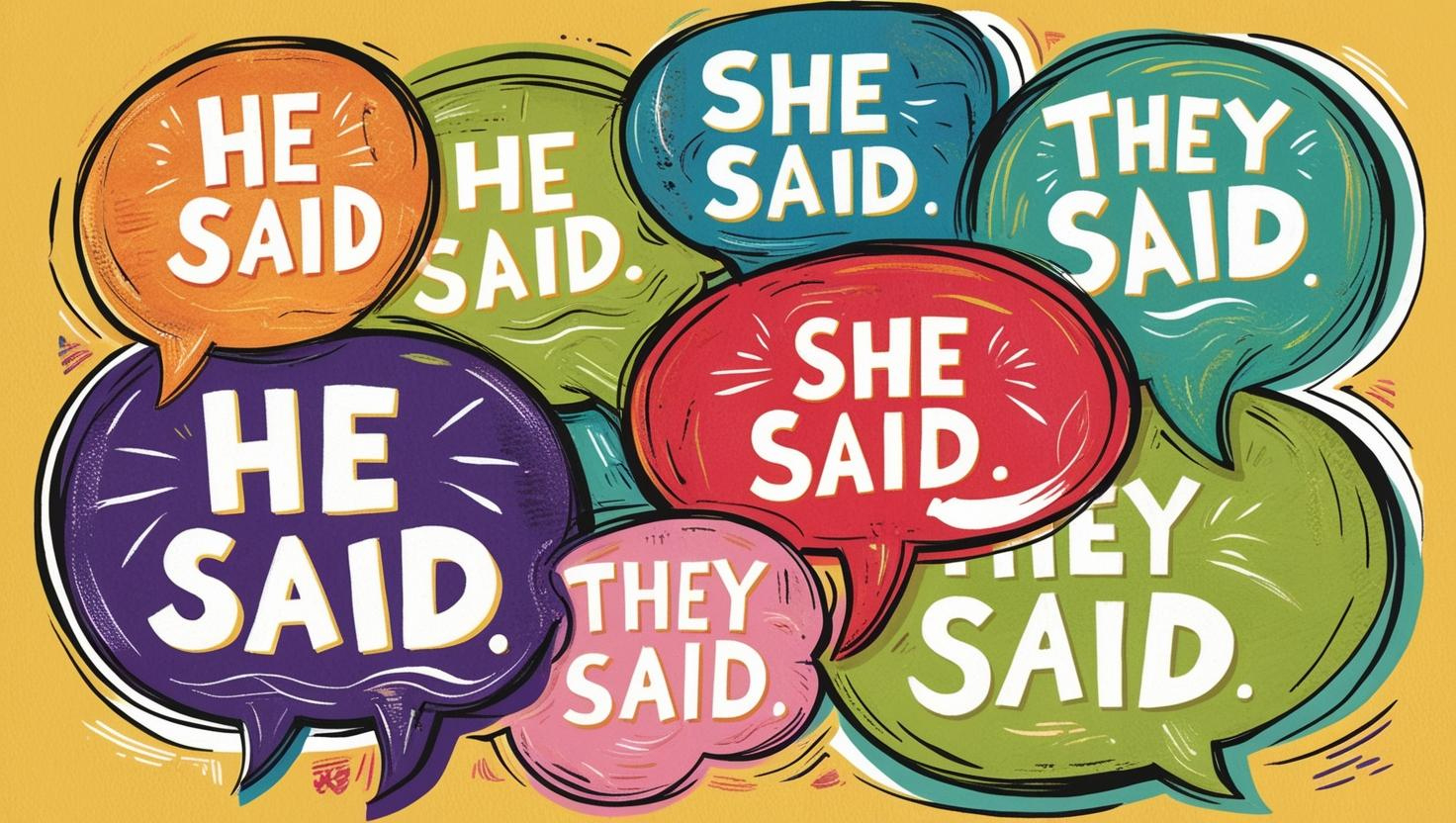
Mastering Dialogue Tags: A Guide to Clear & Effective Attribution
A critical component of writing strong dialogue—and something that editors are particularly meticulous about—is the dialogue tag, also known as a speech tag or attribution.
This is how we identify who is speaking. There’s the spoken dialogue itself, which is placed in quotation marks (e.g., “Blah, blah, blah,”), and then there’s the attribution that tells us who said it (“said so-and-so”).
What Makes Up a Dialogue Tag?
A dialogue tag consists of two key components:
- A proper noun or pronoun (e.g., Tom, he, she, they)
- A verb of speech (e.g., said, asked)
In some cases, an adverb may be added to modify the tag and describe how something is being said (e.g., “Tom said shyly” or “she asked haltingly”), but adverb use should be approached with caution—we’ll discuss why later.
A verb of speech, also known as a reporting verb, is one that directly conveys the action of speaking. In essence, it is any synonym for “says” or “said.”
The Golden Rule: Stick to “Said” and “Asked”
Here’s the crucial point: there are only a handful of verbs of speech that editors universally approve of. Many seasoned editors and discerning readers believe that fiction writers should primarily stick to said and asked when attributing dialogue. Why? Because overly creative synonyms for said—such as snarled, laughed, hissed, grinned—can make a writer appear amateurish.
Here’s why excessive use of these alternatives can be problematic:
- Some substitutions aren’t actually verbs of speech.
Words like smiled and frowned describe facial expressions, not speaking. You can smile while talking, but you can’t “smile” a sentence. - Too many creative synonyms distract the reader.
Instead of serving the story, words like hollered, bellowed, or gasped can make the writing feel forced, breaking immersion. - They serve as a “cheat” for weak dialogue.
If a line of dialogue needs a dramatic verb to convey its tone, then the dialogue itself might need refining. The words spoken should naturally reveal tone, emotion, and intent.
Some writers argue that sticking to “said” and “asked” is boring, but that’s the point—they are nearly invisible to the reader, allowing the story and characters to shine rather than drawing attention to the writing itself.
When to Use Other Verbs
That being said, I’m not a total purist. While some editors insist on using only “said” and “asked,” I believe certain other verbs can be acceptable—if used sparingly and purposefully, and if they are truly verbs of speech.
A few verbs that I consider safe to use include:
- Admitted
- Agreed
- Announced
- Answered
- Argued
- Asked
- Called
- Complained
- Confessed
- Confided
- Cried
- Declared
- Demanded
- Exclaimed
- Explained
- Insisted
- Mumbled
- Muttered
- Replied
- Said
- Screamed
- Shouted
- Whispered
- Yelled
These verbs can add subtle nuance to dialogue when necessary. For instance:
- “I like peanut butter,” he said. (A neutral statement.)
- “I like peanut butter!” he confessed. (This implies reluctance or secrecy.)
- “I like peanut butter!” he complained. (Now, there’s a negative emotion attached.)
These attributions clarify the subtext without overshadowing the dialogue itself.
Avoid These Common Mistakes
Some verbs frequently misused in dialogue tags include:
- Laughed, smiled, grinned, frowned, smirked – These describe expressions, not speech.
- Retorted, implored, entreated – These can feel old-fashioned or overly dramatic.
- Begged, boasted, stammered, corrected, snapped – These often create redundancy if the dialogue itself already implies these emotions or actions.
For example:
- “Please let me go, Mom!” he begged. (The plea is already clear in the dialogue.)
- “Wh-what is it?” he stammered. (The stammer is evident in the way the words are written.)
Breaking Up Dialogue Without Tags
Not every line of dialogue needs a tag, especially in a two-person conversation. If each character has a distinct voice and speech pattern, their lines can flow naturally without constant attributions.
Additionally, you can use action beats to eliminate unnecessary dialogue tags. Instead of:
- “I’m coming!” she yelled.
Try:
- “I’m coming!” She stomped down the stairs.
The action conveys the character’s emotion just as effectively—if not more so—than a dialogue tag would.
Final Thoughts
Good dialogue attribution should be invisible—it should support the story rather than call attention to itself. By keeping tags simple, avoiding unnecessary embellishments, and letting the dialogue itself do the heavy lifting, writers can craft more immersive and professional prose.
Remember: when in doubt, said and asked are your best friends. Use them wisely, and let your characters’ words speak for themselves.
